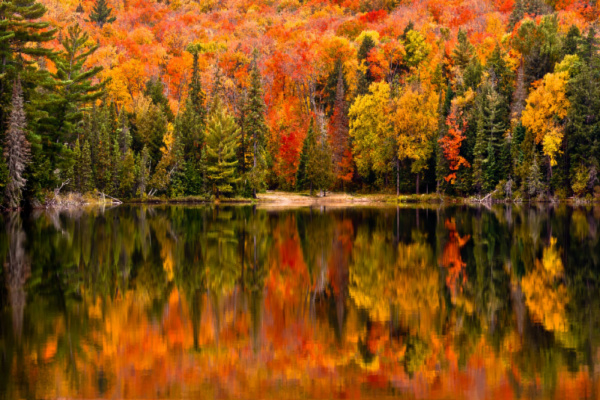The start of meteorological autumn is likely to feel more like summer for millions across the Midwest and Northeast as a persistent weather pattern continues to promote above-normal warmth across the region. But, according to AccuWeather meteorologists, big changes are expected to take place as the calendar flips to October.
Spells of dry weather paired with above-normal heat throughout the summer allowed pockets of unusual regional drought to develop across New England, the interior mid-Atlantic and the Midwest. As of late August, all of Rhode Island and parts of Connecticut and Massachusettes were experiencing extreme drought, according to the U.S. Drought Monitor.
For those looking forward to enjoying autumnal scenery, the widespread warmth could delay the peak of fall foliage in popular viewing areas. But, forecasters say the wait could be worth it this year as vibrant colors are likely to unfold on the hillsides across most of the Northeast, Great Lakes and the mid-Mississippi Valley, especially when compared to the foliage displays of 2021.
AccuWeather long-range forecasters believe that an increase in moisture will fuel rain across the Northeast and Midwest heading into autumn, helping to wash away drought concerns. But, the rain will be a double-edged sword.
“The severe weather threat will pick up again,” AccuWeather Senior Meteorologist Paul Pastelok says. “We do feel a late-season surge may not be as strong as last year when we had quite a bit of tornadic activity, but I still think there’s going to be some and the peak month is October.”
Some of the rain may not come in the form of severe thunderstorms, but rather from a named tropical system. Last year, multiple tropical systems had significant impacts in the Northeast, including Tropical Storm Henri, which made landfall in Rhode Island, and Hurricane Ida, which caused unprecedented flooding in the New York City area and led to dozens of deaths as a tropical rainstorm. And here’s one to remember: it’s also the 10-year anniversary of Superstorm Sandy.
Meteorologist say another direct strike from a hurricane is not completely out of the question in the Northeast this fall. “It is something to watch. But we just don’t have the confidence yet to say that a major strike is going to hit the Northeast at this point,” said Pastelok.
As the summer warmth finally fades and the forest transforms from a sea of green to a palette of vibrant colors, folks across the Great Lakes and Northeast will experience the arrival of chilly air.
The first frost of the season could actually arrive one or two weeks earlier than normal across the Upper Midwest and upstate New York, which translates to late September and early October. However, Pastelok said that the early frost outlook does not pose a serious threat to agriculture during the autumn harvest.
The onset of cooler weather will be accompanied by an uptick in unsettled weather, including the chance for the first snowflakes since spring. “There can be stormy periods for the eastern half of the nation with a primary storm track into the Great Lakes and Ohio Valley, where a mix of snow, rain and ice can occur,” Pastelok said.
“In October, there can be one or two colder air masses that can be just cold enough to produce some snow showers in the interior higher elevations of the Northeast and across the Upper Midwest,” Pastelok said. Most of the snow will be mainly limited to the typical mountain areas, which could help lay down a solid snowpack at some of the region’s ski resorts.
—
Photo Credit: James William Smith / Shutterstock.com
